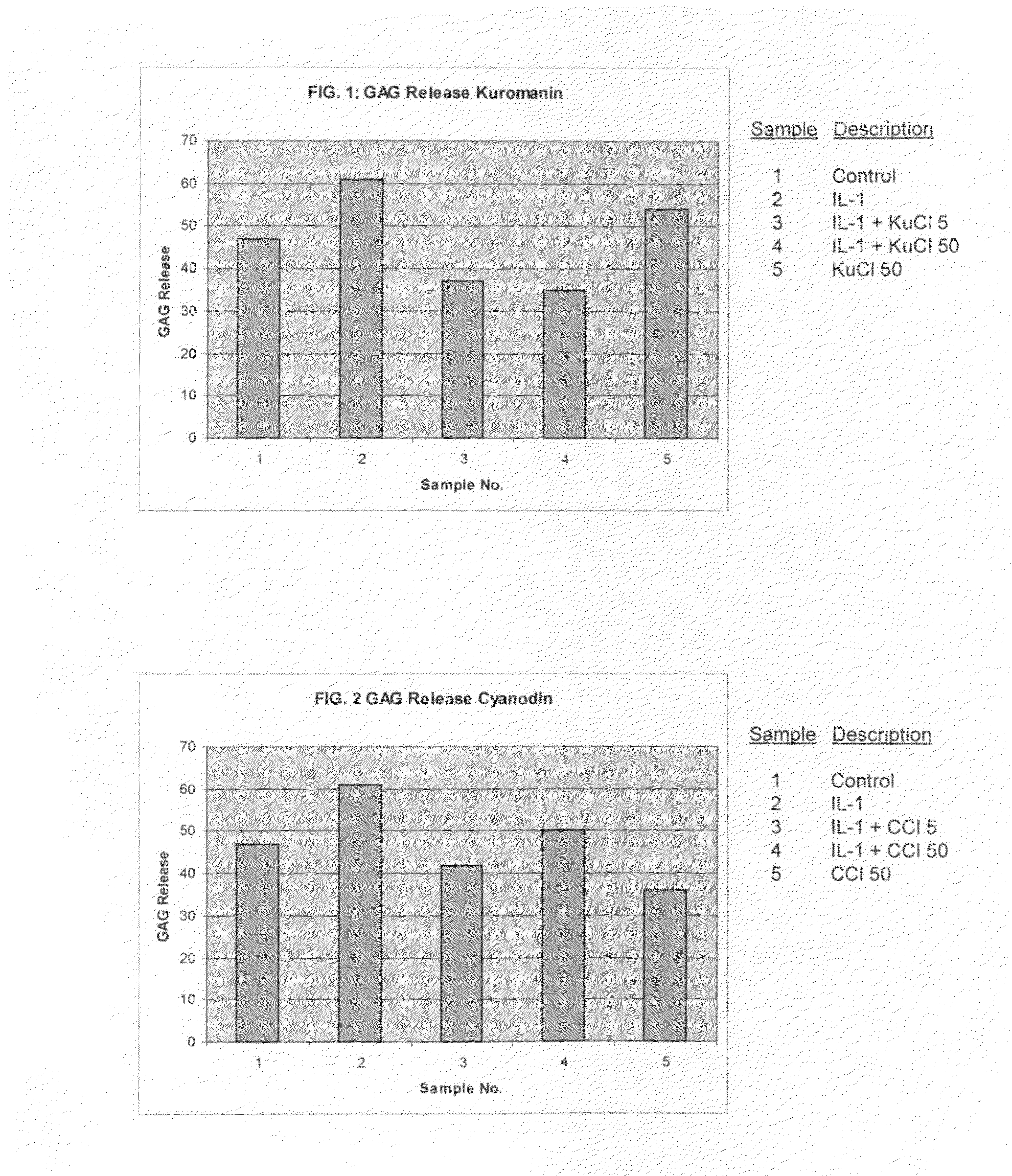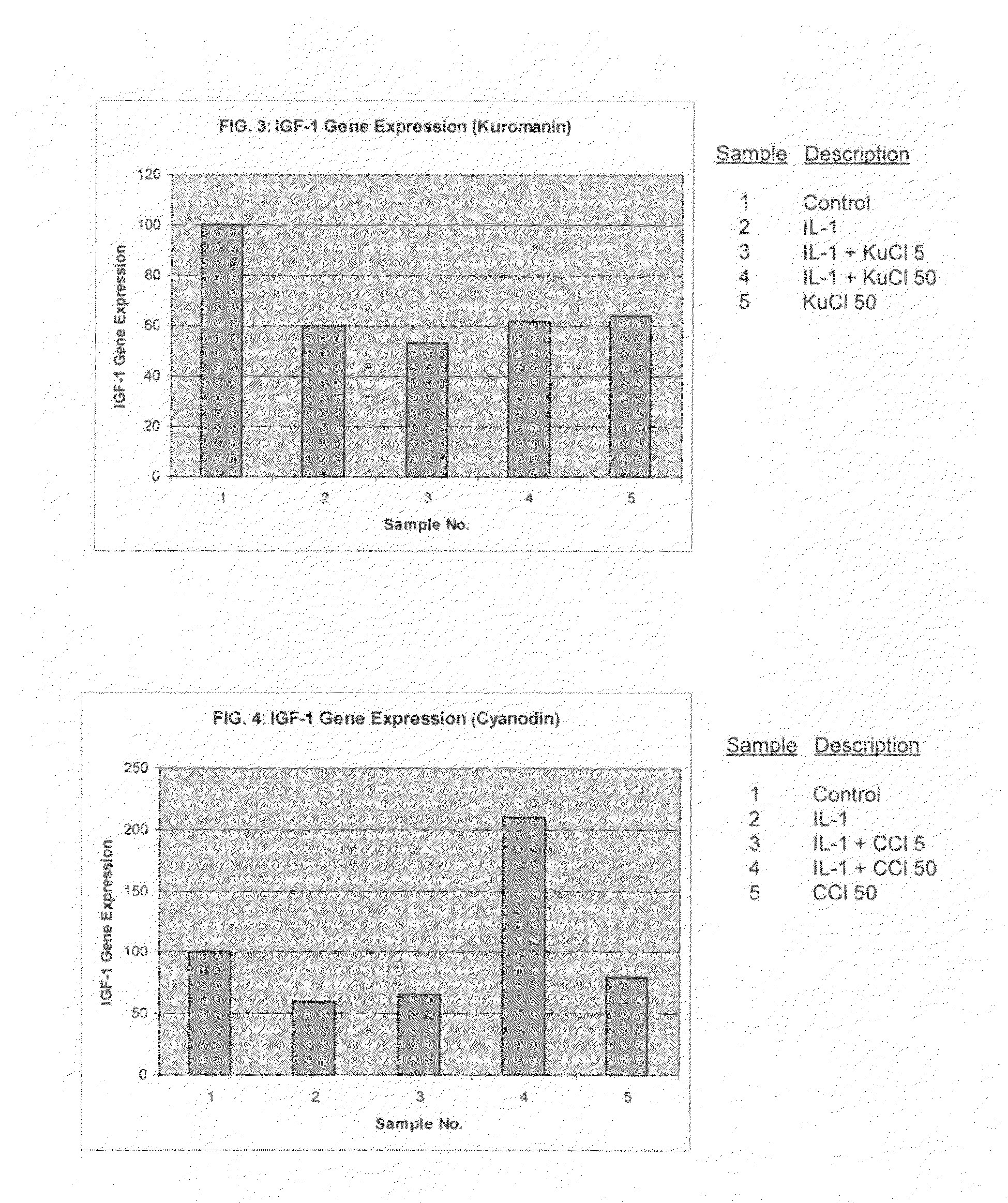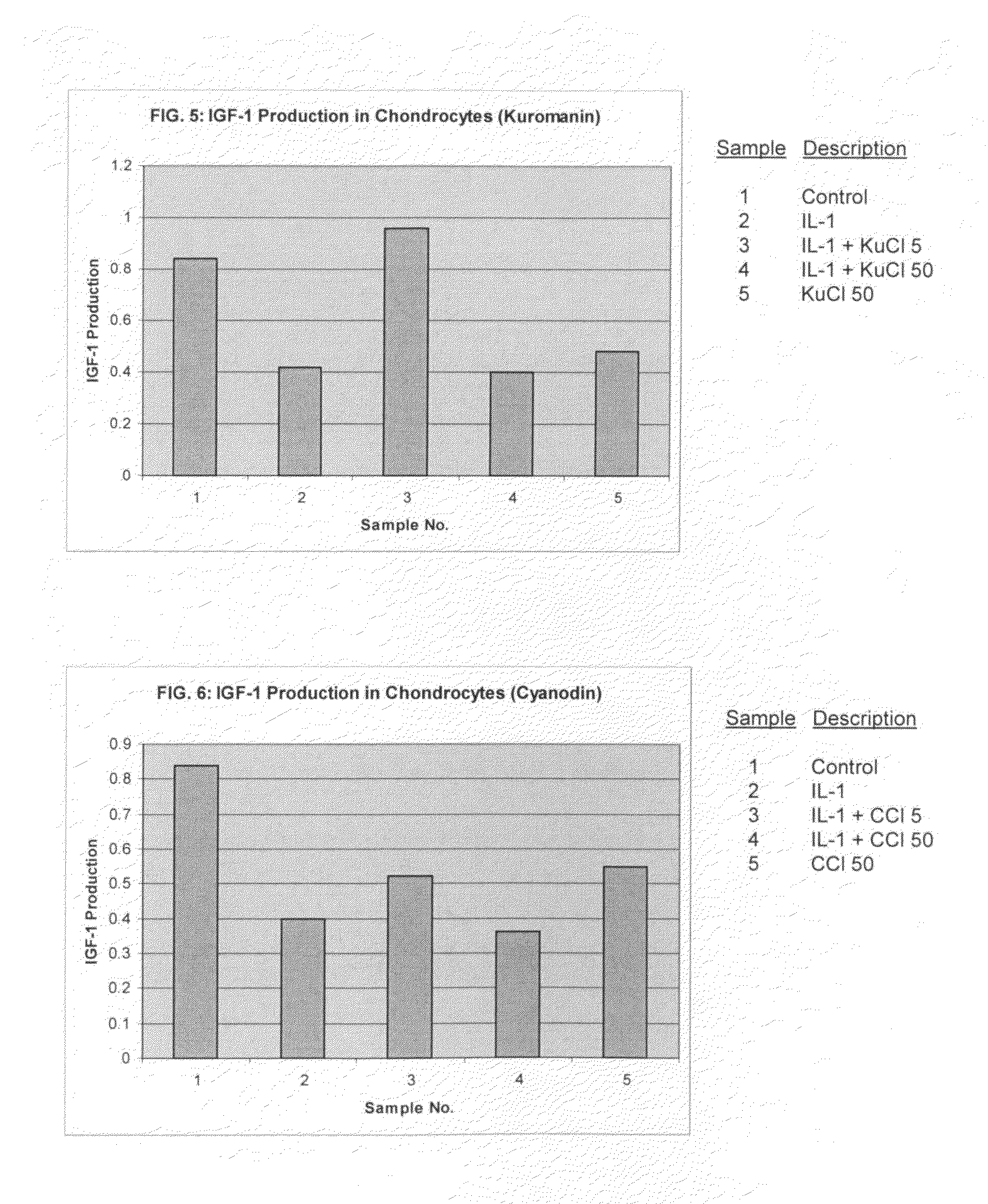Compositions including anthocyanin or anthocyanidin for the prevention or treatment of articular cartilage-associated conditions
a technology of articular cartilage and composition, which is applied in the direction of drug composition, skeletal/connective tissue cells, peptide/protein ingredients, etc., can solve the problems of reducing the activities of daily living, affecting and posing significant costs on both the patient's health and finances
- Summary
- Abstract
- Description
- Claims
- Application Information
AI Technical Summary
Benefits of technology
Problems solved by technology
Method used
Image
Examples
example 1
Chondroprotective Effect of Kuromanin and Cyanidin in Human Chondrocytes and Cartilage Explants
[0136]The chondroprotective effect of kuromanin and cyanidin is shown in human cartilage explants and in cultured chondrocytes. In summary, both kuromanin and cyanidin are effective chondroprotective agents limiting the degradation of human cartilage against the catabolic effects of IL-1. In addition, kuromanin and cyanidin may promote anabolism through enhanced production of IGF-1 or by reducing suppression of IGF-1.
Materials and Methods
[0137]Human osteoarthritic cartilage samples were procured through the Tissue Procurement Facility of the University Hospitals of Cleveland / Case Western Reserve University and with prior approval of the IRB of University Hospitals of Cleveland. The cartilage samples were obtained from patients undergoing total anthroplasty of the knee due to degenerative joint diseases. In all cases care was taken to use only “macroscopically normal” cartilage samples. No ...
example 2
Kuromanin Protects and Promotes Cartilage Metabolism in Bovine Cartilage Explants in the Presence of IL-1
[0150]After exposure of control bovine cartilage explants to kuromanin chloride increased production of mucopolysaccharides was observed. When preincubating bovine cartilage with IL-1 to form damaged tissue, the addition of kuromanin increased production of mucopolysaccharides.
Materials and Methods
[0151]Bovine cartilage explants were placed in culture including 10% FCS and Vitamin C. IL-1 was added to a test population and IL-1 was not added to control. Explants were cultured for 24 hours. Kuromanin chloride was then added to each culture. Mucopolysaccharides were measured using radioactive 35 Sulfur uptake.
Results
[0152]In each instance, kuromanin treatment resulted in an increase of mucopolysaccharide.
example 3
Effect of Anthocyanin Treatment on Osteoarthritic Cartilage
[0153]The effect of cyanidin chloride with and without glucose was tested for its effect on reducing changes seen in osteoarthritis.
[0154]Cyanidin alone had an inconsistent effect on bovine cartilage explants at a dose of 500 uM but no effect on human OA explants. Increasing glucose concentration to 0.45% had a beneficial effect, but higher glucose dose (2.5% and 5%) reduced matrix synthesis. Combining cyanidin and glucose did not have significant synergistic effect.
Materials and Methods
[0155]Tissue Source and Harvest. Bovine cartilage explants (full thickness, 6 mm in diameter) were harvested from fresh femoral condyles. Human osteochondral plugs were harvested using 6 mm ostochondral grafting donor tool (Arthrez 1981-06S, Naples, Fla.) from femoral condyles retrieved from total knee arthroplasty surgery that had been stored in DMEM at 20 degrees C. for less than 24 hours. Full-thickness cartilage explants were cut from the...
PUM
| Property | Measurement | Unit |
|---|---|---|
| thickness | aaaaa | aaaaa |
| pH | aaaaa | aaaaa |
| concentration | aaaaa | aaaaa |
Abstract
Description
Claims
Application Information
 Login to View More
Login to View More - R&D
- Intellectual Property
- Life Sciences
- Materials
- Tech Scout
- Unparalleled Data Quality
- Higher Quality Content
- 60% Fewer Hallucinations
Browse by: Latest US Patents, China's latest patents, Technical Efficacy Thesaurus, Application Domain, Technology Topic, Popular Technical Reports.
© 2025 PatSnap. All rights reserved.Legal|Privacy policy|Modern Slavery Act Transparency Statement|Sitemap|About US| Contact US: help@patsnap.com



